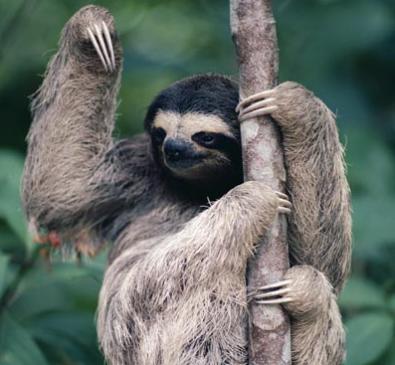
David Attenborough’s – Life of Mammals 3 Plant Predators
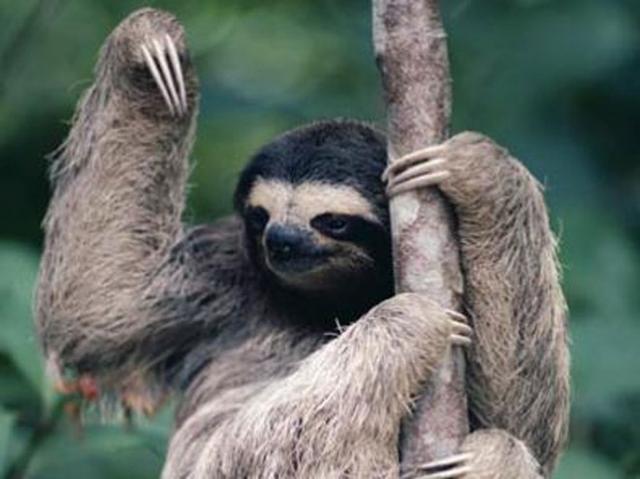
(Full video at the bottom)
Starts with another lazy fur ball… the sloth. Half blind, half deaf and even eats half-hearted. Note: My 15 minute reminder went off… went down to check on pizza… oven wont on! Talk about half-hearted. So yeah, the sloth cant digest the leaves proper so David calls him a mobile compost heap. This one is in a hurry (HURRY? The things so damn slow!) to get to the ground coz it wants to take a dump, which they do once a week in the same place. It’s so lazy the muscles have been reduced to thin ribbons and sleeps on the treetops half the time. David compares his busy schedule to the sloth just grooming, having a few nibbles and sleeping. Something called a tapir, meant to be the largest animals in the South American rainforests, looks like a pony sized retard elephant (no offence). Now these animals eat little bits of different kinds of leaves so as not to get a lethal dose of any one kind of poison. It eats some earth/special kind of clay that binds to poisons and neutralizes them.
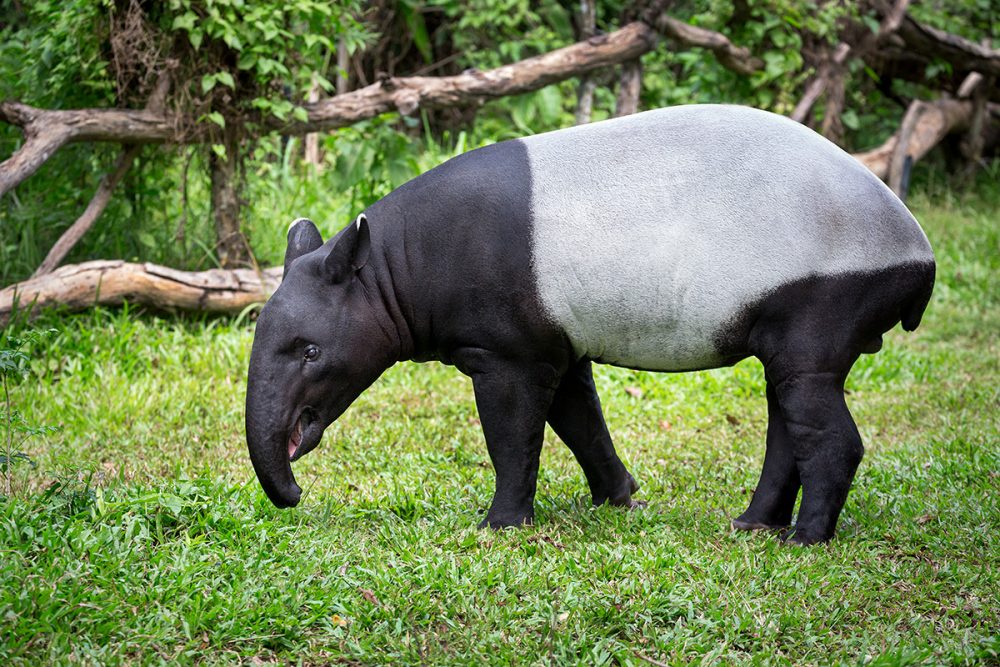
Hamsterish Pikas are up next. They have a noisy warning letter others know which patches are taken. They eat leaves and flowers and stack them up several feet thick for winter too. Pretty clever… they collect various poisonous plants since it acts as a preservative. The ones with less poison become edible quicker. And they make several hundred trips A DAY. Beautiful shot of cave and waterfall in Mt. Elgon. David set up infrared cameras to figure out grooves on the cave walls. Note: Another kinda monitor I used to use during VTR. Lol bush buck, buffalo and elephants in pitch black carefully taking each step… the ele bumped its head on one of the boulders. Oh, they’re doing all this for the salt.
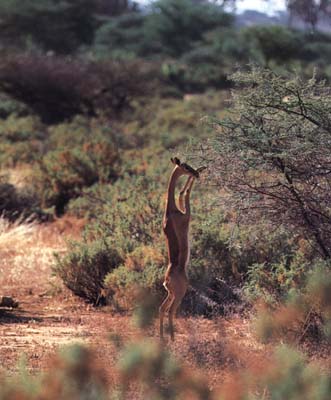
Next are the grazers of Africa… David explains how the grass has microscopic spines/thorns on the edges of its leaves and needles of silica inside its tissue so the grazers have teeth that grow continuously as fast as they’re worn down and they digest everything twice. Lol then there’s a revealing/funny shot of food going down this long thin neck and shoots back up to be masticated a second time then goes to the second chamber of the tummy. Shots of the annual migration. High speed shot of the migration reveals the animals following the same trails in the grass. So the wildebeests will only eat the grass with phosphorus and arrive at the Serenghetti just when the phosphorus’ie grass begins to sprout. Dikdiks, impalas and gerenuks vs. the acacia trees. The gerenuks are compared to ballet’s standing on their points coz they’re the ones that can get the leaves higher up by standing with a similar grace.
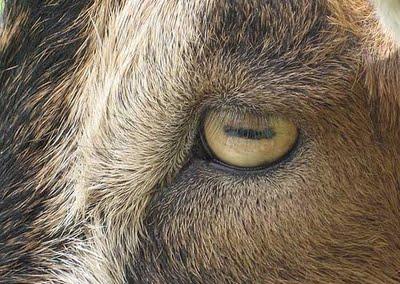
The giraffes get the highest leaves… one guess why. Wow these stretched grazers got tongues 18 inches long that got a grasp too (and from personal experience they’re sticky and slimy). They ‘hang’ in groups of 30 deep and the acacia aint a thing when it comes to their leathery lips. The acacia don’t mind through coz dry season summons seed dispersal. Since their seeds aint digestible they come out fine in the droppings. The acacia does mind the elephant though coz they be felling the trees for some greens. So they get the top most leaves with the least spines, then using the tusk they get the bark. Sometimes eat the branch too and let it stew in the stomach for 3 days. Hey the grazers got elongated pupils… I mean horizontally!!! To watch out for predators, plus when their heads go down to graze the eyes swivel in their sockets to ensure the pupil stays horizontal. That’s something new. Yooooo I always wondered why the grazers never get together and charge at the predators instead of running away… well here we have a scene where they’re stalking/taunting the predators. But in one shot the predator loses it and U-turns. You know what happens next don’t you.
Amazon #ads
The North American pronghorn is the world second fastest but world champion when it comes to long distance. Amazing shots of herbivores running and jumping and then even better shots of escapes and fighting back by herbivores. Wow lion and lioness pick a buffalo that strayed from the heard, buffalo was still standing… the others notices so they turned and come to the rescue. Now lioness was like funk it I aint that hungry but the lion was still holding on… till they came even closer and then he was like I’m still the King… BIATCH! Hahaha just messing.
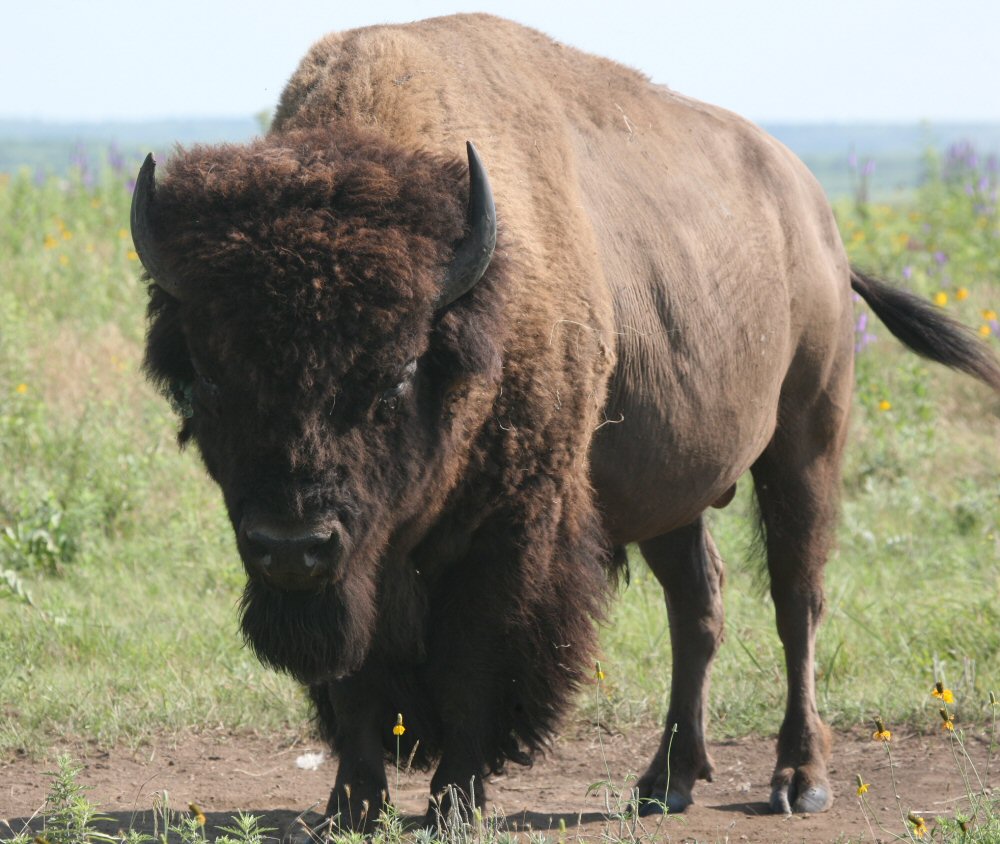
Bull bison are next… man they look… big, dumb and dangerous (and for some reason I keep thinking Genghis Khan). So the bull bison prepare for the annual rut of sniffing out the best female (then letting out a ugh sound and expression), they walk in parallel to other males to size them up, scrape the grounds to show strength and pee on the ground and roll in it to reek of their hormones. The rolling and roaring ends up in a battle that lasts a few seconds. Oh great all that machismo for a few seconds? Now I’m thinking WWF/WWE.

American bighorn sheep got the biggest roundest horns though. If the male opponent is small time he just gets a kick on the a55. Really! While the closely matched males will have to head bang for sure. They have lil hairline cracks in their skulls to act as shock absorbers but still the rules are strictly head on coz any other way and they’d both break their necks. Interesting, they size each other up by horn size and once heads lock the ridges come into play by preventing them from slipping to test each others strength. The V shape has something to do with not being able to strike the skull directly. Once opportunity comes up, they’ll use the same horns to stab the enemy in the flank or belly.
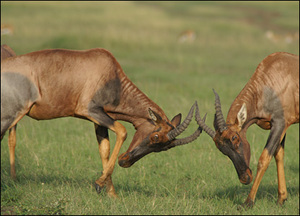
The male topis even put on war paint, by plastering their horns with mud they look more intimidating to males and more attractive to females. Males either pursue females or chase males to establish a stamping ground. They also have to continuously fight to maintain ownership but mating carries on for days (not constantly). They fight so much that finally they just fall which don’t help much coz of the increasingly bold hyenas looking for a bite.
1. A Winning Design | 2. Insect Hunters | 3. Plant Predators
4. Chisellers | 5. Meat Eaters | 6. The Opportunists
7. Return to the Water | 8. Life in the Trees | 9. The Social Climbers
10. Food for Thought





